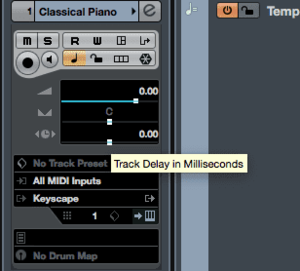alfred tapscott
Member
Hi all!
I've got a couple of small issues that I'm sure some of you guys have solved well. I'm on cubase 9.5, btw.
I found myself using very different approaches when I know I'm gonna record live than when I need to do a realistic mockup that will stay. Anyway, lately I have to try to achieve both, and quick. So I've got a couple of questions workflow-wise that maybe some of you will have clever answers for.
I write everything quantized and automatically quantize ends to make life easy for the orchestrator. But when using libraries like CSS, If I want to use legato patches they need to overlap a tiny bit. Using the legato options won't work cause some notes might not be tied together in the melody. So I guess I need to program something that will add a few ticks to the notes so they overlap but not too much that will show wrong when the orchestrator opens the midi in sib or finale?. Maybe the logical editor?
And another stupid thing. All these legato libraries need a huge negative delay for the legatos to sound in place, but then the begginings of phrases with no legato triggering sound too soon. Yes, I know I can move the beggining to the right but then, again, my orchestrator won't have things quantized. Has anybody found a good solution for this??.
I know some things might sound a bit stupid, but for me having to work quick and efficient these things do make a big difference.
Thanks very much!!
Alfred
I've got a couple of small issues that I'm sure some of you guys have solved well. I'm on cubase 9.5, btw.
I found myself using very different approaches when I know I'm gonna record live than when I need to do a realistic mockup that will stay. Anyway, lately I have to try to achieve both, and quick. So I've got a couple of questions workflow-wise that maybe some of you will have clever answers for.
I write everything quantized and automatically quantize ends to make life easy for the orchestrator. But when using libraries like CSS, If I want to use legato patches they need to overlap a tiny bit. Using the legato options won't work cause some notes might not be tied together in the melody. So I guess I need to program something that will add a few ticks to the notes so they overlap but not too much that will show wrong when the orchestrator opens the midi in sib or finale?. Maybe the logical editor?
And another stupid thing. All these legato libraries need a huge negative delay for the legatos to sound in place, but then the begginings of phrases with no legato triggering sound too soon. Yes, I know I can move the beggining to the right but then, again, my orchestrator won't have things quantized. Has anybody found a good solution for this??.
I know some things might sound a bit stupid, but for me having to work quick and efficient these things do make a big difference.
Thanks very much!!
Alfred






